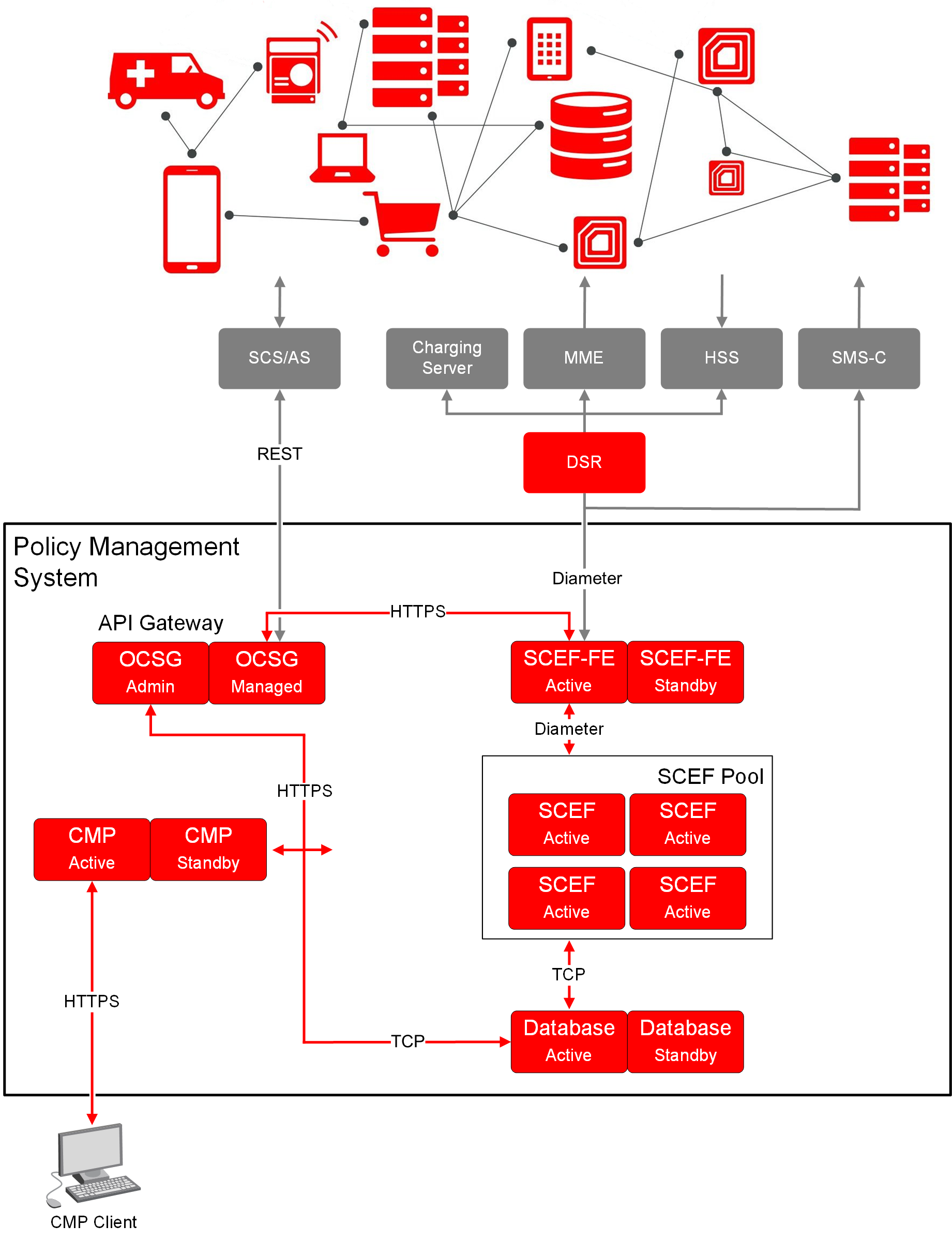Oracle Communications Policy Management system provides the mechanism that allows communications service providers (carriers) to control, monitor, and charge for their subscribers' access to network resources. One component of Policy Management is the Service Capability Exposure Function (SCEF) server. The SCEF server interacts with Internet of Things (IoT) networks as a machine type communication interworking function (MTC-IWF). Figure 1 shows how the Policy Management system interacts with other elements and an IoT network.
IoT devices have unique identifiers and can transmit data over a network. An IoT network can consist of numerous devices, characterized by simple design, low power consumption, brief and infrequent data transmissions, and infrequent machine transmissions (mostly they are not transmitting). The SCEF server supports IoT devices through non-IP data delivery (NIDD) as defined in 3GPP specification 23.682. An SCEF server can relay triggers from an SMS-C function to IoT devices using Short Message Service (SMS) messages through the Diameter T4 interface. An SCEF server communicates with home subscriber server (HSS) using the Diameter S6t and S6m interfaces. An SCEF server communicates with mobility management entity (MME) functions using the Diameter T6a and T6b interfaces. An SCEF server generates charging records and communicates with charging servers using the Diameter Ga interface.
An SCEF network communicates with services capability server/application server (SCS/AS) functions using either the T8 or the WebSocket RESTful API protocols through the Oracle Communications Services Gatekeeper (OCSG) product, which provides a proxy API gateway with trusted identity management, IMS access, Quality of Service (QoS) control, messaging services, and industry-standard security, authentication, accounting, and authorization. Configurable, extensible mechanisms support applying rate, volume, and other limits on a per-SCS/AS basis.
To support large network environments, an SCEF network can communicate with charging, HSS, and MME servers using the Oracle Communications Diameter Signaling Router (DSR) product.
IoT service and scalability is provided using pools of SCEF servers, and to increase capacity of the SCEF network you can add additional servers. Sessions are statelessly routed to SCEF servers using SCEF Front End (SCEF-FE) servers. The SCEF-FE cluster hides the SCEF topology from external servers, and supports up to three SCEF servers in a mesh network SCEF pool. To provide high availability, Policy Management clusters consist of pairs of active and standby servers with automatic failover to prevent interruption of service.
Management and control of the Policy Management network is provided by Configuration Management Platform (CMP) servers. The CMP system provides configuration management; logging; alarms; system monitoring; and upgrade management. Administrators interact with the CMP system using a secure web browsing interface. To provide high availability, CMP clusters consist of pairs of active and standby servers.
Session and configuration data is stored in a central database cluster.
